Lantana flowers are known for their bright colors and hardy nature, but they also carry deep spiritual meanings. These flowers symbolize qualities such as resilience, adaptability, and transformation. Lantana flowers remind us of the power to overcome challenges, grow through change, and attract positive energy.
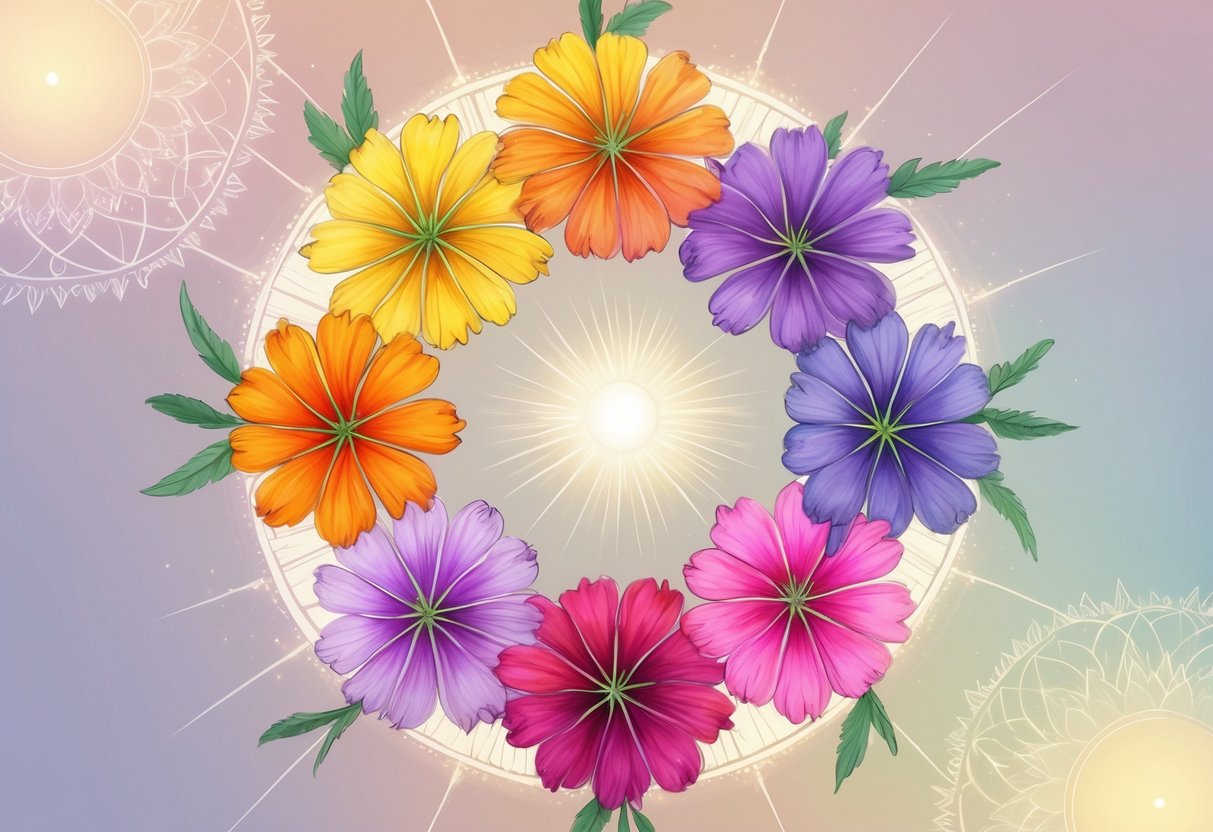
Beyond their physical beauty, lantanas reflect spiritual lessons about unity, protection, and renewal. Their ability to thrive in difficult conditions makes them symbols of perseverance and healing. This makes the lantana flower a meaningful guide for those seeking strength and motivation in their spiritual journey.
The many colors of lantana also represent diversity and the beauty found in differences. As a symbol, they encourage embracing life fully, staying open to change, and valuing connection with others. These spiritual messages make lantana flowers a rich source of inspiration.
Key Takeways
- Lantana symbolizes strength through resilience and adaptability.
- It represents growth, healing, and protection in spiritual life.
- The flower’s colors highlight unity and the power of diversity.
Understanding Lantana Flower Spiritual Symbolism
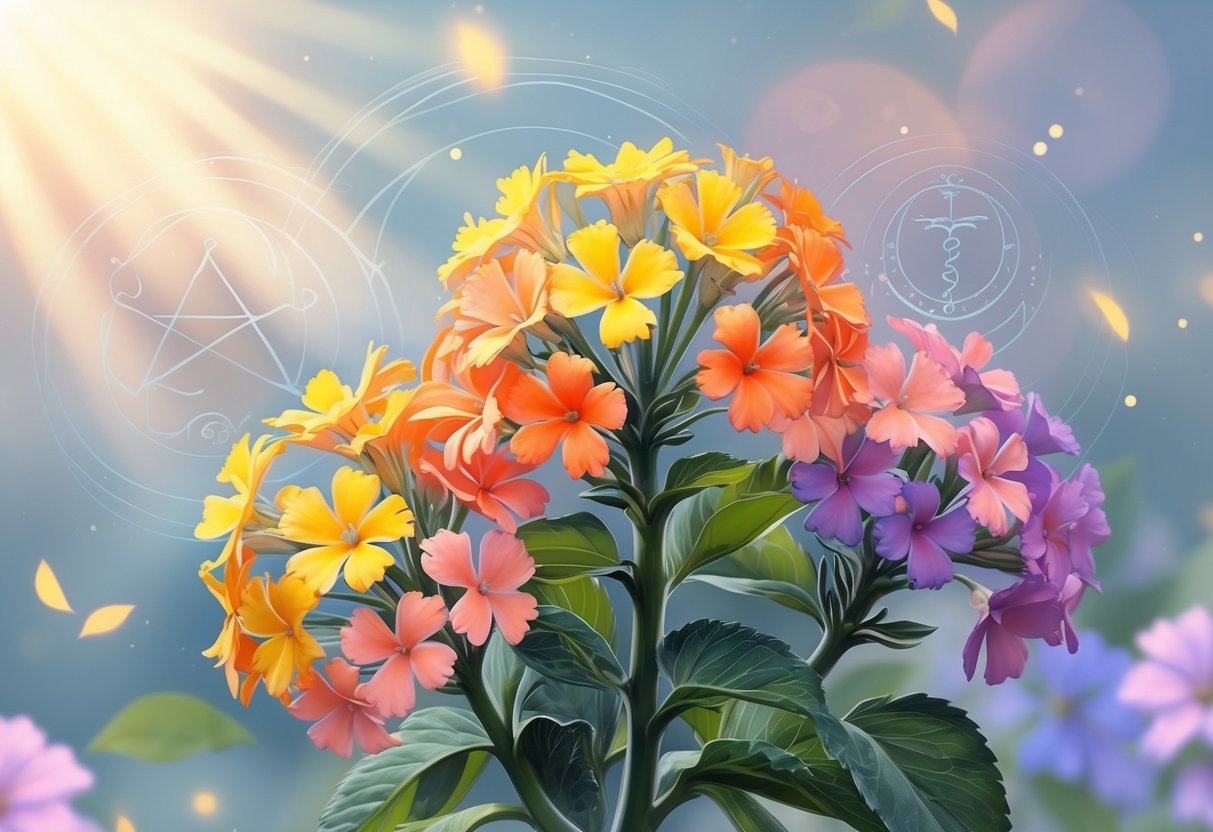
The lantana flower carries several clear spiritual messages. It represents strength to endure difficult times, the ongoing process of personal growth, and the balance between attracting positive influences and being aware of hidden challenges.
Core Spiritual Meanings of Lantana
The lantana flower symbolizes resilience, showing how life can thrive even in tough environments. Its ability to bloom in various climates makes it a symbol of adaptability and hardiness.
It also reflects healing and restoration, as its vibrant colors signify renewal and emotional repair after hardship. The lantana’s changing hues represent transformation and growth, reminding individuals that healing is a journey with ups and downs.
Another core meaning is unity through diversity. The flower’s clusters of different colored blossoms illustrate how differences come together to create beauty and strength.
Role in Spiritual Journeys
In spiritual journeys, the lantana serves as a symbol of perseverance and progress. Like the plant’s persistent growth through obstacles, it encourages people to move forward despite setbacks.
It also promotes inner magnetism. Just as lantana attracts pollinators, it symbolizes drawing positive energy and opportunities by nurturing one’s inner strength.
The flower’s presence can represent spiritual protection, signaling the need to build resilience against negative forces. Its dense growth mirrors a protective barrier that guards spiritual well-being.
Influence on Positive and Negative Energy
The lantana flower attracts positive energy through its bright colors and vibrant blooms. It encourages joy, vitality, and motivation by symbolizing creativity and the power to thrive.
However, it also warns of hidden complications. Despite its attractiveness, lantana can be invasive and overpowering, symbolizing situations or people that may appear beneficial but carry risks or challenges beneath the surface.
This dual nature teaches mindfulness in relationships and situations, promoting awareness that not all appearances reflect underlying realities.
9 Profound Spiritual Meanings of Lantana Flowers
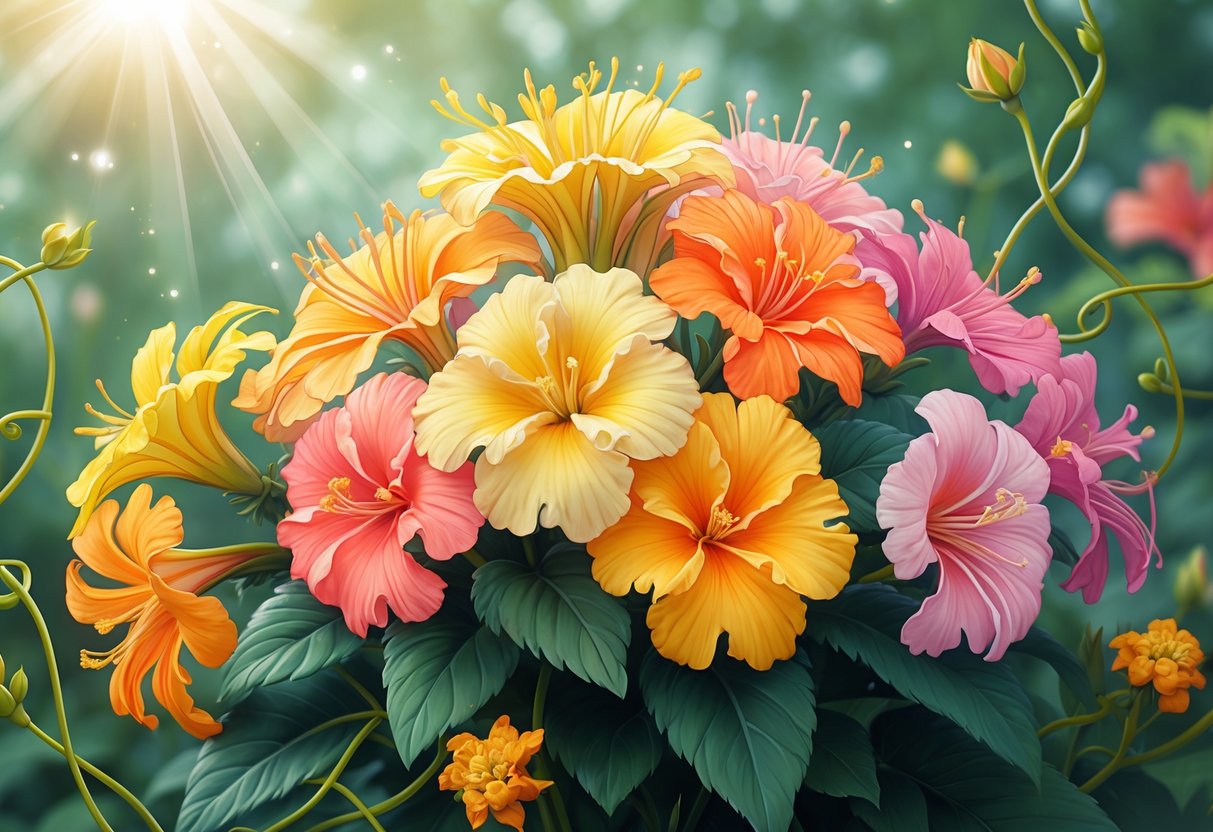
Lantana flowers hold deep spiritual lessons tied to change, endurance, happiness, and protection. Their vibrant colors and hardy nature reflect many qualities that encourage growth and inner strength. These meanings relate closely to how one faces challenges, seeks joy, and safeguards their well-being.
Growth and Personal Transformation
Lantana symbolizes transformation through its life cycle from a small seedling into a vivid, flowering shrub. This growth process represents personal development and change. The plant’s shifting flower colors show how people evolve over time, adapting and improving.
It teaches that transformation often happens gradually and involves facing struggles. Like the lantana, individuals may undergo difficult phases but emerge stronger and more vibrant. This symbol encourages embracing change as a natural and necessary part of life for growth.
The flower’s ability to thrive in tough conditions reminds one that growth isn’t always easy, but persistence leads to meaningful personal progress. It urges a focus on evolving into the best version of oneself.
Resilience and Strength
Lantana is known for its hardiness and ability to survive in harsh environments. This resilience serves as a symbol of strength in adversity. The plant’s capacity to flourish despite challenges reflects the human spirit’s power to endure difficult situations.
Its sprawling growth, tough leaves, and resistance to pests show steadfastness and determination. These qualities remind individuals that resilience involves standing firm and pushing forward, even when obstacles arise.
The shifting colors of lantana blooms also highlight how strength can transform one’s outlook. Rather than being weakened, enduring trials can lead to renewed confidence and inner power.
Joy and Positivity
The lantana’s bright, multicolored flowers symbolize joy and optimism. Their vibrant display encourages embracing happiness and maintaining a positive attitude, even in tough times.
This flower represents the importance of celebrating life’s small pleasures. It motivates one to see beauty and hope in everyday moments. Joy is not just a feeling but a force that sustains and refreshes the spirit.
Lantana’s presence is a reminder to spread kindness and positive energy. Its attraction of butterflies and hummingbirds symbolizes how positivity draws good experiences and relationships.
Protection and Purification
Lantana also carries meanings of spiritual protection and cleansing. Its dense growth can be seen as a natural shield, defending against harmful forces or negative energy.
This plant encourages cultivating strong personal boundaries and a pure, clear energy field. It suggests the importance of guarding one’s mind and spirit from toxicity or spiritual harm.
The lantana’s ability to flourish in various conditions symbolizes the need to maintain inner purity, no matter external challenges. It acts as a guide to stay centered and protected while growing spiritually.
Additional Spiritual Insights and Emotional Associations
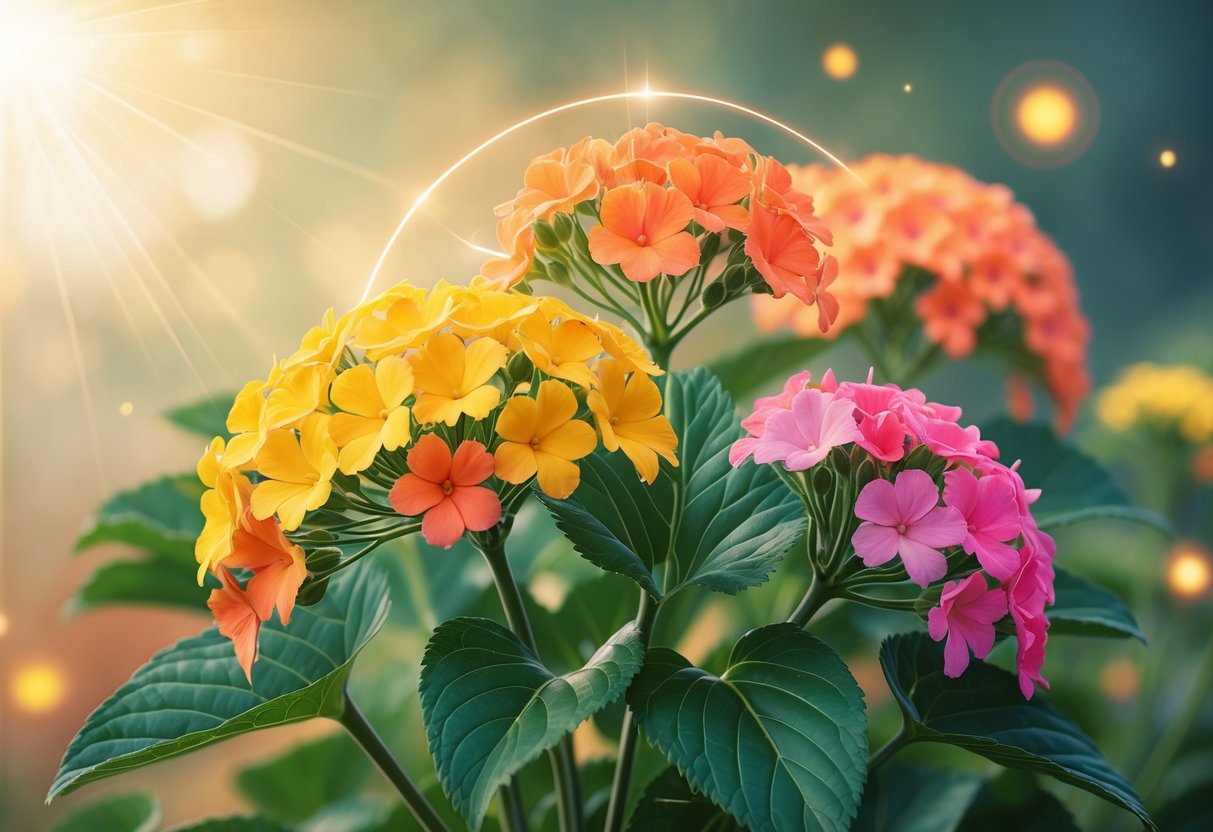
The lantana flower carries deep connections to emotional healing, relationships, and personal strength. Its symbolism spans recovery, love, passionate energy, compassionate devotion, and the importance of unity, reflecting many aspects of the human spirit and social interaction.
Healing and Recovery
Lantana symbolizes emotional healing and restoration. It thrives in harsh conditions, showing resilience that mirrors the process of recovery after difficulties. This flower reminds people that healing takes time but is natural and possible through patience.
Spiritually, lantana encourages letting go of past wounds and embracing renewal. Its changing colors represent the different stages of recovery, from pain to strength. People often see it as a sign to nurture their mental and emotional health, promoting balance and peace. Its energy supports those turning suffering into growth.
Love and Relationships
In the context of love, lantana represents both attraction and the complexity of relationships. Its vibrant colors symbolize passion and the ability to draw others in naturally. It serves as a reminder that genuine connections require adaptability and openness to change.
Lantana also highlights the balance between joy and challenges within relationships. While it attracts positive energy, it warns that love can sometimes involve unseen difficulties. This flower inspires commitment and growth through mutual support, encouraging individuals to nurture bonds with care and honesty.
Passion and Intensity
The lantana flower reflects strong emotions such as passion and intensity. Its bright, bold hues express vibrant energy and a lively spirit. People associate lantana with enthusiasm for life and the drive to pursue goals with determination.
This flower’s ability to bloom under tough conditions symbolizes enduring passion despite obstacles. It encourages focusing energy on what matters most without losing vitality. Lantana’s symbolism helps inspire motivation, reminding individuals to channel intensity into creative and positive actions.
Devotion and Compassion
Lantana embodies devotion and compassion through its persistence and nurturing nature. The plant’s steady growth despite adversity mirrors a deep commitment to caring for others and oneself. Spiritually, it signals the importance of empathy and protection.
Its dense clusters remind people of interdependence and the strength found in supportive relationships. Lantana encourages acts of kindness and emotional generosity. It calls for continuous compassion that sustains communities and personal growth, urging resilience born from understanding and love.
Unity and Connection
Lantana’s clustered flowers symbolize unity and cooperation. Each small blossom contributes to a larger pattern, representing how individual efforts combine to create strength and beauty. This reflects the power of community and teamwork.
The plant thrives in diverse environments, showcasing adaptability that leads to shared success. Its growth pattern teaches the importance of working together through challenges without losing individuality. Lantana inspires a harmonious blend of differences that builds lasting connections and collective well-being.
Lantana in Folklore, Mythology, and Traditional Medicine
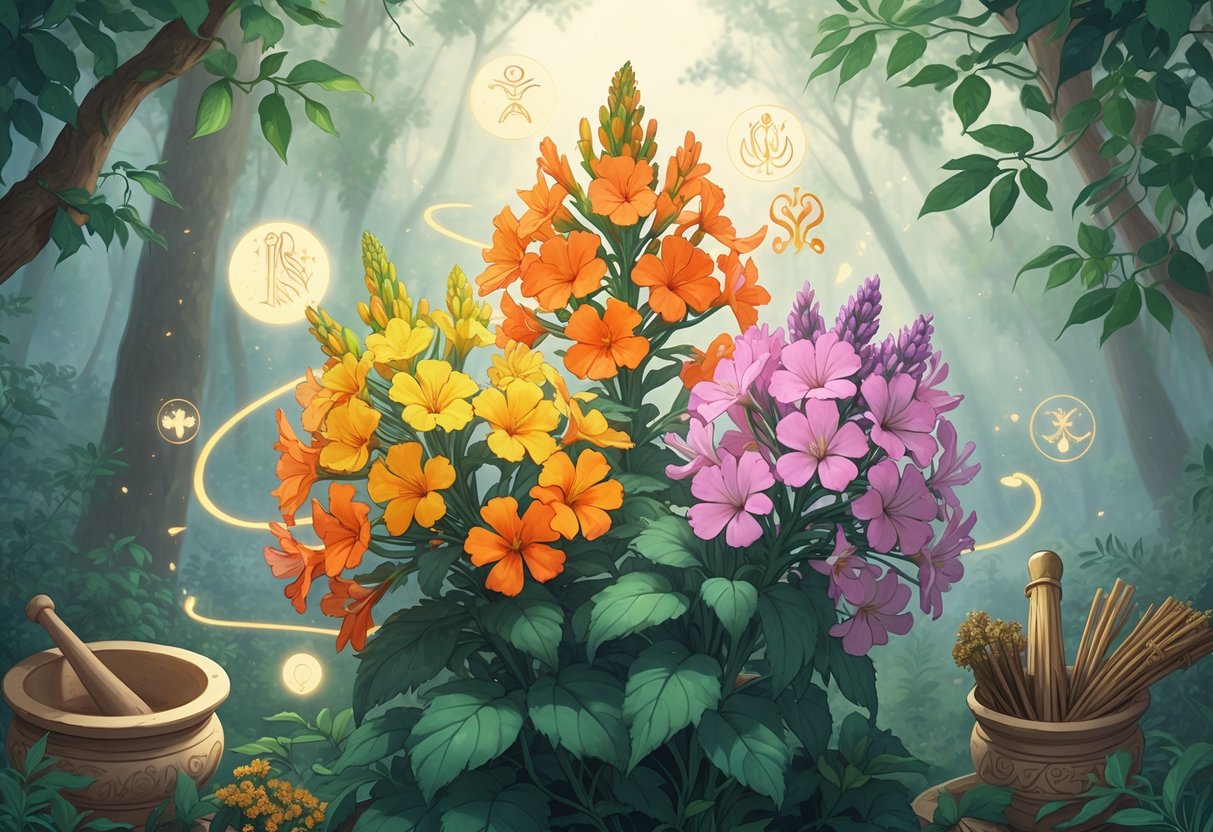
Lantana flowers have deep roots in stories and beliefs that explain their spiritual importance. They are linked to legends about eternal beauty and divine powers. At the same time, they play a practical role in medicine and rituals focused on cleansing and healing.
Legends and Spiritual Stories
In folklore, lantana flowers are said to hold the soul of a princess who cursed them to bloom forever. This legend highlights themes of beauty, longing, and eternity tied to the plant. Some believe that finding an all-yellow lantana flower signals the arrival of a divine presence.
In Hindu mythology, lantana is connected to gods like Vishnu and Krishna. It is thought offering lantana to Vishnu brings blessings and protection. Other stories link red lantana flowers to the goddess of love, symbolizing passion and devotion.
These tales emphasize lantana’s role as a symbol of strength, resilience, and spiritual power.
Role in Traditional Purification Rituals
Lantana is used in purification rituals in various cultures. Its presence is believed to clear spaces of negative energy and protect people from harmful spirits. Some families keep lantana flowers in their homes to invite luck and healing.
The plant’s leaves and flowers also serve a medicinal purpose. Traditional medicine uses lantana to treat ailments such as fever, cough, and skin issues. These healing properties strengthen its importance in rituals that focus on wellness and spiritual balance.
Lantana’s use in both medicine and ritual highlights its dual role as a protector and healer.
The Significance of Lantana Flower Colors
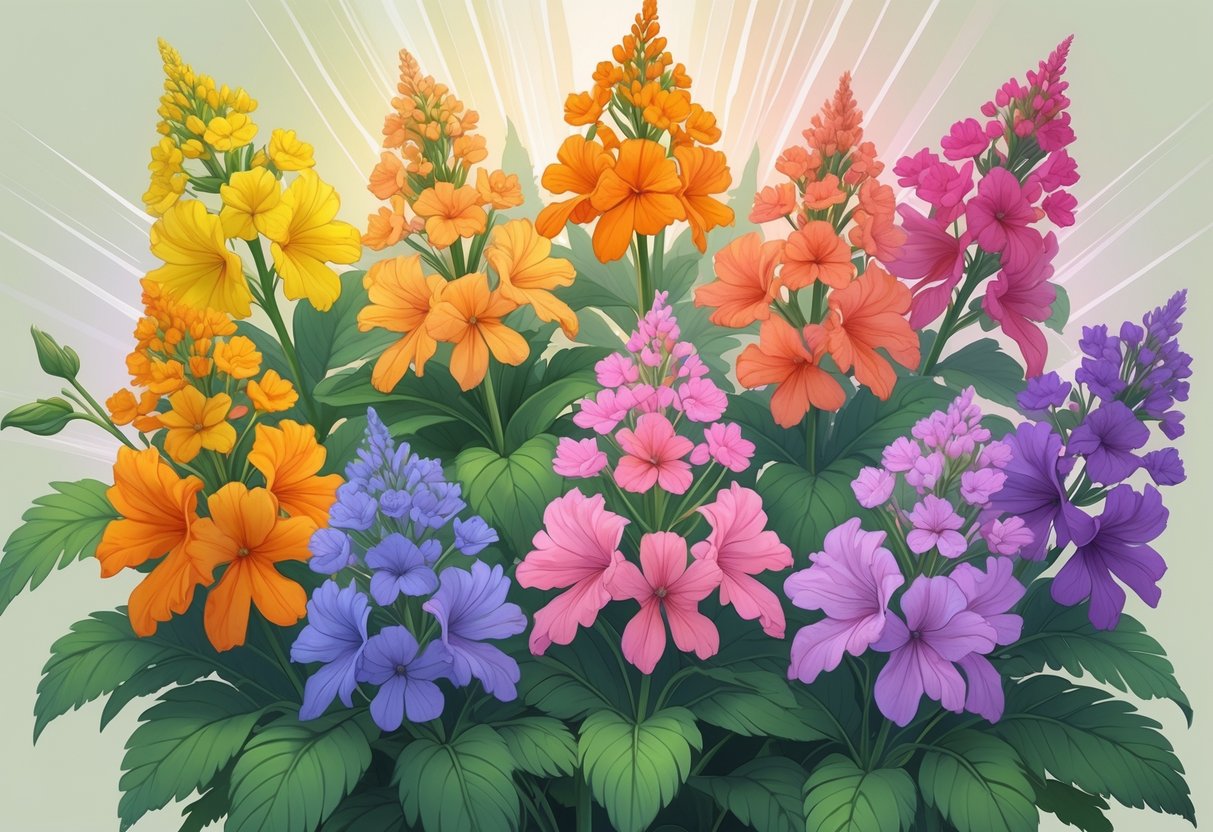
Lantana flowers appear in many shades, each carrying specific meanings related to emotions, energy, and spiritual states. Their colors often symbolize different qualities that resonate with personal experiences, such as love, happiness, and growth. Understanding these meanings helps appreciate the lantana’s diverse beauty in a meaningful way.
Red Lantana: Love and Strength
Red lantana is closely linked to passion and strength. The vibrant red color symbolizes deep love, courage, and power. It suggests a strong emotional connection and the ability to face challenges with determination. Red lantana may also represent protection, as the color has associations with vitality and boldness.
This color conveys not only romantic feelings but also personal strength and resilience. People often see red lantana as a symbol of unconditional love and steadfastness. It encourages embracing one’s inner power while maintaining warmth and compassion in relationships.
Yellow and Orange: Joy and Prosperity
Yellow and orange lantana flowers represent happiness, prosperity, and positive energy. Yellow is often connected to good luck, optimism, and clarity, while orange symbolizes enthusiasm, creativity, and success. Together, these colors highlight an uplifting spirit and abundance.
Yellow lantana is seen as a bright charm that invites joy and new opportunities, making it a symbol of optimism and sunlight. Orange lantana reflects dynamic energy and growth, encouraging motivation and a hopeful outlook. Both colors are significant for attracting prosperity and enhancing one’s sense of well-being.
Other Color Interpretations
Lantana also comes in pink, purple, and white, each with unique spiritual meanings. Pink lantana often relates to affection and gentle care. Purple symbolizes mystery, spiritual growth, and transformation. White is linked to purity, renewal, and healing.
These colors emphasize lantana’s versatility in expressing different facets of life and spirit. They encourage embracing diversity and change, showing that beauty and strength come from a mix of qualities. Each hue adds to the lantana’s role as a symbol of balance and spiritual richness.
Spiritual Uses of Lantana Flowers and Essential Oils
Lantana flowers and their essential oils are valued for specific spiritual and practical purposes. They are used to cleanse spaces, promote calmness, and support mental clarity. These uses connect the plant’s natural properties with personal growth and protection.
Aromatherapy and Spiritual Cleansing
Lantana camara essential oils are often used in aromatherapy for their refreshing and calming scent. When diffused, the oils help clear negative energy and create a peaceful atmosphere. Many believe burning dried lantana leaves or using the oil in spiritual baths aids in cleansing and purification.
The essential oils have natural antibacterial and antifungal properties, which add to their cleansing power. This makes lantana useful not just physically but spiritually as well, especially during rituals aimed at removing unwanted energies.
Using lantana in these ways supports spiritual balance and can enhance a person’s sense of well-being by providing a clean, positive space.
Enhancing Focus and Inner Strength
Lantana’s vibrant energy is linked to increasing mental focus and resilience. The essential oils can help stimulate the senses and encourage a more centered state of mind during meditation or spiritual practice.
People often use lantana oil to boost inner strength when facing challenges. Its aroma is said to inspire determination and endurance, helping the spirit remain firm in difficult situations.
This connection between lantana and inner growth highlights the flower’s role in spiritual development by promoting clarity and perseverance.
Lantana’s Place in Nature and its Role in Spiritual Ecology
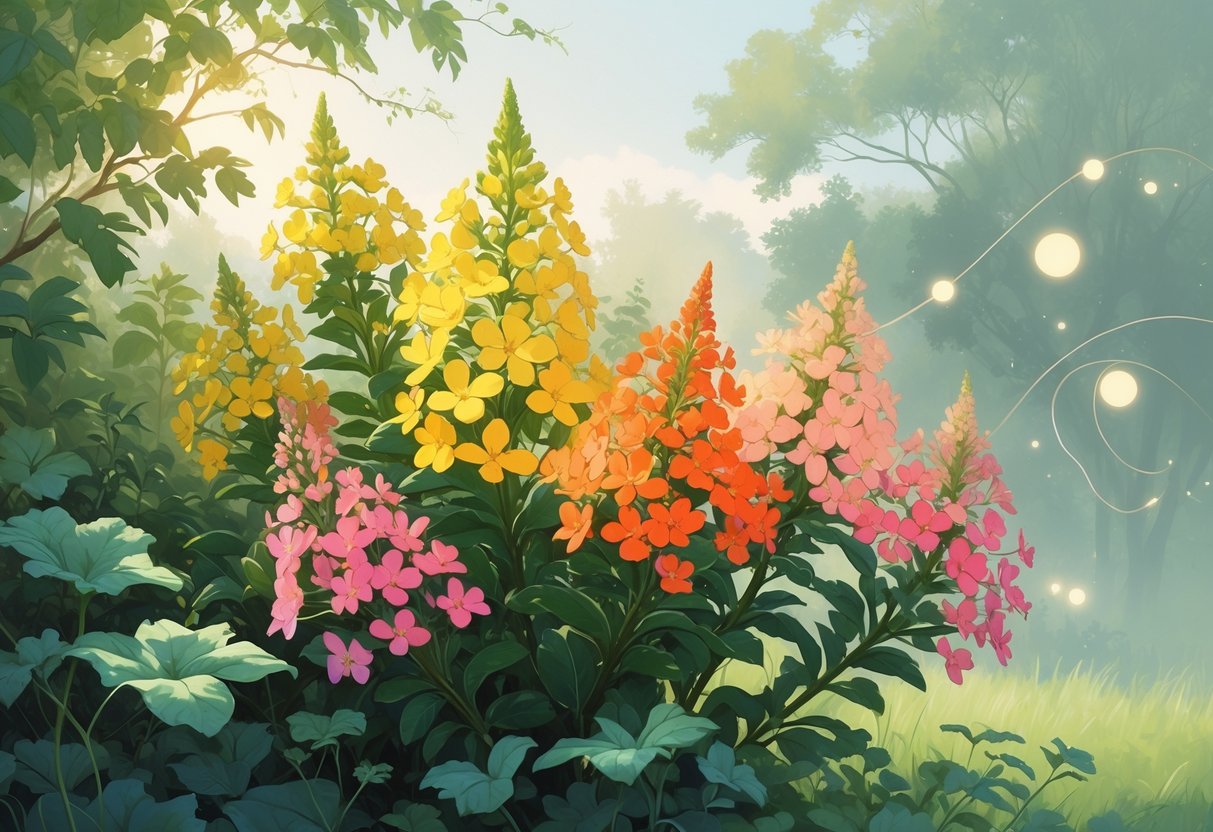
Lantana plays a significant role in its natural ecosystem by supporting pollinators. Its bright colors and scent draw creatures that help plants reproduce and maintain balance in nature. This interaction adds layers to lantana’s spiritual symbolism related to life, energy, and cooperation.
Attracting Butterflies and Bees
Lantana flowers are known for attracting butterflies and bees, essential pollinators in many ecosystems. Their clustered, multicolored blossoms provide both nectar and shelter. Butterflies, drawn to lantana, help move pollen between flowers, assisting plant reproduction.
Bees also benefit from lantana’s nectar and pollen. This relationship supports the health of bee populations, which are vital for the pollination of many plants humans rely on. By attracting these insects, lantana contributes to biodiversity and environmental stability.
The presence of butterflies and bees around lantana symbolizes transformation, productivity, and the interdependence of life forms. These pollinators’ work connects with spiritual themes of growth, renewal, and harmony with nature.
Symbolism in Natural Harmony and Beauty
Lantana’s place in the environment highlights natural harmony through its vibrant, diverse colors. Each flower cluster blends multiple hues, creating a visual representation of unity in diversity. This diversity enhances the aesthetic of gardens and wild areas alike.
It serves as a symbol of balance where different species interact and support one another. Lantana’s ability to thrive in various climates and conditions reflects adaptability and resilience in the natural world.
Its role in promoting ecological balance speaks to spiritual ideas of coexistence and cooperation. The plant’s radiant appearance and integration with pollinators illustrate how beauty and function work together in nature’s design.
Follow us on Social Media!
I’m Nina, and I’m very passionate about spirituality. Exploring the depths of the soul and connecting with the divine has always been my source of inspiration. Join me on a journey of self-discovery and inner peace through my writing.
